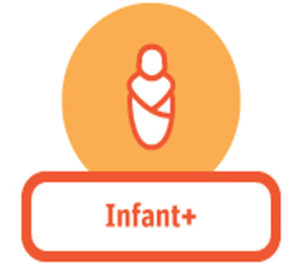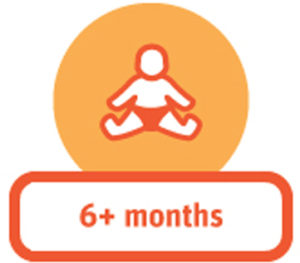Signs of Weakness by Age for Therapists/Specialists
Surveillance and Referral Aid
Target Audiences
- Therapists (PT, OT, Speech)
- Other early intervention professionals
- Physicians who see children referred from primary care for developmental delay, hypotonia, and other general, non-diagnostic indications, but are not themselves experts in neuromuscular disorders (such as rehabilitation medicine, developmental pediatricians, and orthopedics)
Goal
Among children (ages 6 months-5 years) referred for services/consultation based on developmental delays, identify those who might have weakness secondary to a neuromuscular disorder. Listen to parents’ concerns about development. Facilitate early diagnosis of neuromuscular disorders, which is important because it helps target therapies and other interventions, improve outcomes, reduce family distress related to the diagnostic process, and provide the opportunity for accurate genetic counseling.
Use of the Surveillance Aid
- The guidance in this aid assumes that a therapist/specialist is following the child because he/she has an identified developmental delay and/or hypotonia.
- The guidance also assumes that the user understands normal motor development, and evaluates each child in light of his/her overall presentation and developmental history.
- The recommendations include communicating directly with the primary care provider. If direct communication is problematic, an alternative approach is to have the parents sign a release and send a copy of your report to the primary care provider.
- The materials that follow identify “red flags” by age, and suggest when referral for diagnostic evaluation should occur. In addition to the red flags, this aid includes a discussion of “yellow flags” that contribute to concerns about muscle weakness.
- This aid is designed for children who were born on or after 38 weeks of gestation. If a child is born prior to 38 weeks of gestation, please use adjusted age for developmental milestones.
Choose surveillance recommendations by age. Scroll down to read more about red and yellow flags.
Additional red flags that should prompt a diagnostic evaluation by a specialist, regardless of age:
- Tongue fasciculations
- Regression in developmental milestones
- CK level that is greater than 3x normal
Warning “yellow flags”
Yellow flags that should increase concern about muscle weakness (taking into account overall development):
- Any developmental delay: upon noting any developmental delay, evaluate motor development as part of the surveillance and screening
- Language delay: note that neuromuscular disorders may present with language delays
- Eating/feeding: children who are very slow at swallowing, sucking, and/or chewing; frequent coughing during feeding; fatigue during feeding or stopping before satisfied; requiring more positional support than usual during feeding
- Babbling: if a child is not babbling by 10 months, evaluate motor development
- Fatigue/decreased endurance: tiring during routine tasks (e.g., eating, crawling, climbing, playing) can be an early sign of muscle weakness
- Frequent falling: frequent falls may be a sign of muscle weakness. Falls tend to be sudden, and are often characterized by collapsing straight down to the floor (not forward or over).
Developmental norms:
- pull to sit with no head lag*: 50% by 3.5 months, 75% by 4 months, 90% by 6.5 months
- sitting without support**: 50% by 5.9 months, 75% by 6.7 months, 90% by 7.5 months
- getting into sitting*: 50% by 8.5 months, 75% by 9.5 months, 90% by 10 months
- walking alone**: 50% by 12 months, 75% by 13.1 months, 90% by 14.4 months
- rise to stand from floor: corresponds with time of independent walking
- runs*: 50% by 16 months, 75% by 18.5 months, 90% by 21 months
- jump up*: 50% by 2 years, 75% by 2 years 3 months, 90% by 2.5 years
- hops*: 50% by 3.5 years, 75% by 4 years, 90% by 4 years 3 months
*Denver II **WHO Multicentre Growth Reference Study Group: WHO Motor Development Study
Download a pdf of the Surveillance and Referral Aid for Therapists and Specialists. This Aid includes signs of weakness by age, red flags and warning signs for muscle weakness, and referral recommendations.


